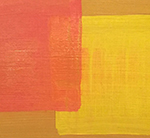Project #7
Urban Rural Resistance
A framed-snapshot photo exhibition by Dream Coordination Office at the Actionsraum fuer Kunst und Gewerbe / “Fortschnitt” in Vienna’s 4th district, running from July to October 2000.
Picture frames made of wood scraps found at a construction site contain 18 photo pairs, documenting signs of resistance – both in the city and the country – to the right-wing government in Austria, which came to power in 2000. Politically motivated graffiti, both urban and rural, are connected. The power of nature is also a resistant force.
“To talk about aesthetics in relation to the political means talking about beauty, the sense of beauty, wonder and awe engendered by nature, by the human form, by art and indeed by the political life of mankind. And also to talk of ugliness. I want to consider the eruption of violence, the perverse dissemination of lies and hatred in the individual within society as a reaction to, or perhaps a ‘transgression’ of this primary aesthetic sense of wonder, as in Rilke’s words: ‘Beauty is nothing but the beginning of Terror that we are just able to bear’.”
Felix de Mendelssohn, The Aesthetics of the Political in Group Analytic Process: The Wider Scope of Group Analysis, In: Patterns of Prejudice, London
Eine Framed-Snapshot Ausstellung von Dream Coordination Office im Aktionsraum für Kunst und Gewerbe “Fortschnitt” – Rechte Wienzeile 15, 1040 Wien (Juli-Oktober 2000).
Bilderrahmen aus Baustelle Holz beinhalten 18 Kollagen – Bilder, die Widerstandserscheinungen in der Stadt und auf dem Land paaren. Politisch motivierte Wandschmierereien ziehen ihre Linien in die ländische Weite. Die Macht der Natur heißt auch: Widerstand.
Several days before the Russians pushed into the Austrian Alpine area of Reichenau an der Rax and into St. Poelten, resistance groups were discovered and shopt. Another group, called 05, (the two digits look like the German word for Austria, Oesterrecih) was a kind of illegal coalition working in Vienna that was recognized, after occupation, also by the Russians. At the request of an officer of the Vienna defense commando, the group connected with the chief commander of the 3rd Ukrainian front, Fedor Tolbuchin, in the first days of April in the region of Hochwolkersdorf.
During Austria’s second republic, the Ballhausplatz (in front of the former Imperial Palace in Vienna) has been the site of anti-fascist demonstrations. In 1980, demonstrators here made demands, based on the anti-fascist laws provided in the Austrian constitution, that the candidate Dr. Norbert Burger be banned from participating in the election to President of the Republic, and to ban the NDP party. “The NDP should be banned; we owe it to millions of dead.” Burger, the chair of the National Demonkratischen Partei and a man sentenced in absentia to prison in Italy for terrorism in South Tyrolia, received 3.4% of the vote. In 1985, protestors demonstrated against the defense minister Dr. Friedhelm Frischenschlager, demanding that he step down from his seat in government. The FPÖ (extreme right party) politician, who personally received the pardoned war criminal Reder in Italy with a handshake and accompanied him to an army barracks, received a thunderous applause for this from his party. Reder had let a massacre against citizens in Italy’s Marzabotto. Frischenschlager “excused himself” and remained in government.
From the book: Wien: ein Stadtführer durch den Widerstand – Widerstands Archiv
State fortification, a last gesture, on May 1st, 1999, the African asylum seeker Marcus Omofuma died in the presence of police in the course of being deported from Austria and became one of the most important figures of the fight against racism in the Second Republic.
© 2016 Dream Coordination Office:






